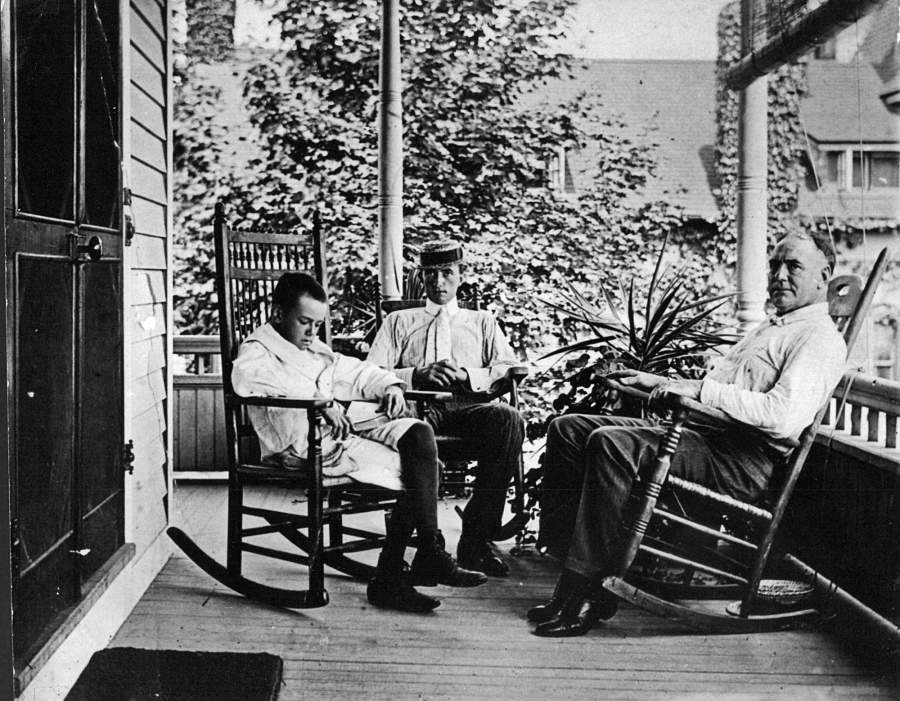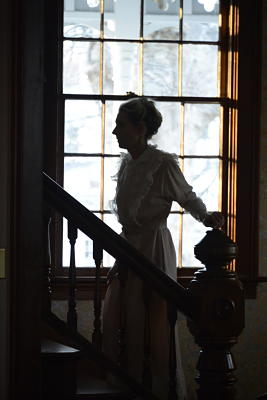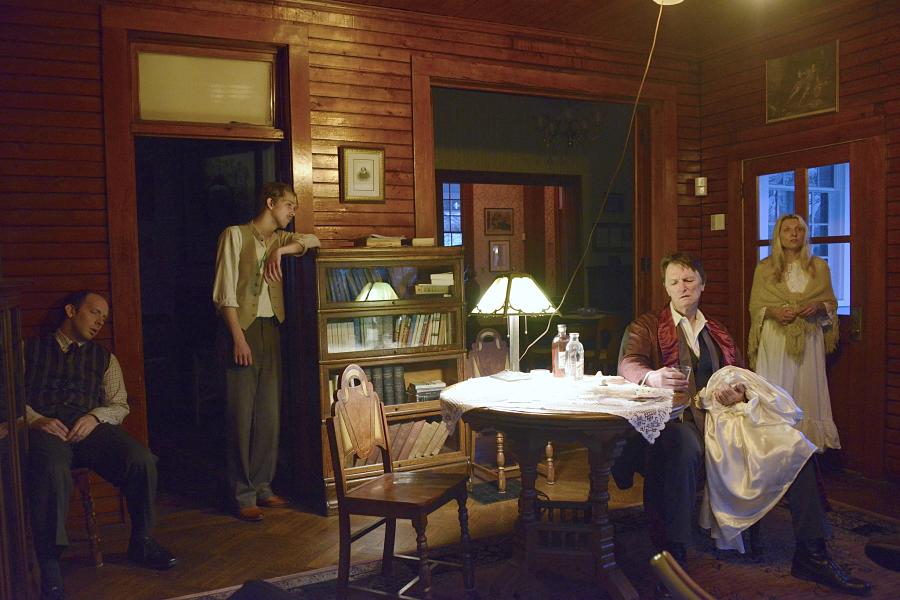A handful of audience members watching Eugene O’Neill’s Long Day’s Journey Into Night this spring will not only be witnessing an American classic in an intimate space but will be literally in the room where it happened.
From April 7 to May 6, actors from New London’s Flock Theatre will be presenting (as it also did last spring) O’Neill’s searing autobiographical family drama at the Monte Cristo Cottage, the playwright’s summer boyhood home and the setting for the drama (as well as for Ah! Wilderness).
“Being in that audience, you cannot escape the pain that the family is experiencing as well as the love that they have for each other,” says Preston Whiteway, executive director of the Eugene O’Neill Theater Center in nearby Waterford, which is the steward of the home and who gave the green light for the project, the first time a full production of the play was staged at the national historic landmark.
For yet a further dose of authenticity, the cast rehearsed at New London’s Thames Club, where ONeill’s father was a member and where he often escaped from his family, before moving rehearsals in the last few weeks to the home itself.
The 1840s cottage is a structure with a wrap-around porch on a small rise overlooking Long Island sound. After O’Neill’s father James bought it in 1884, he expanded the home by moving and attaching a one-room schoolhouse and making it the living room.
“The house itself is just as much a member of the ensemble as any of the actors,” says Darren Wood, the founding artistic director of the 29-year-old Flock Theatre, which presents site-specific productions in the New London area. “Where the audience sits is in the exact position and angle that O’Neill has written it from, as stated in the stage directions, right down to the light switches.”

“It was an exhilarating experience,” says Christie Williams, who plays family patriarch James Tyrone, based on O’Neill’s celebrated actor-father. “It’s the kind of challenge every actor wants. It’s essentially inhabiting a role and an actual place at the same time.”
Williams says the actors perform in a “hyper-realistic” style that is more cinematic than theatrical. “We use our ordinary, everyday voices, because there is no effort needed to project to the back of the house. But with that we also realize that every blink of the clink eye or clearing of the throat was a gesture that the audience would immediately pick up on.”
That means, he points out, that “the concentration on the moment in your character is continuous. There are no breaks or rests, no escapes, no way to avoid the audience’s attention, so you have to be entirely there all the time.”
This heightened experience is shared by the 26 audience members sitting in three rows. At last year’s performances, he says, “There were a lot of moments in the play when the audience just gasped. The level of naturalism we were able to achieve had to be something new to members of the audience, as it was to us actors.”
During the course of the play, actors enter and exit various rooms in the house, and when the male characters leave to go to town, they actually leave to go to town. Maid Cathleen calls to them from the porch where they are out front clipping hedges.

But the most realistic touches are those involving Mary, the Tyrones’ morphine-addicted matriarch. It’s not hard to imagine to Mary upstairs in that small cottage, with its thin walls transmitting every word they’re saying about her, Wood points out.
Williams agrees. “Actually hearing the subtle sounds of Mary upstairs, faintly hearing her rummaging around to find her wedding gown or to hear her go to the spare room [where she hides her morphine]—well, those are real sounds. And then seeing Mary descending the actual staircase where O’Neill’s mother came down, as she makes her final entrance in a haunted, drug-induced state—you can feel everybody in the room is just holding their breath.”
Concludes Wood, “You can get so much more of a sense of what I believe O’Neill was intending.”
Says Anne Flammang, who plays Mary, “The audience is placed in the position of voyeur. They can’t avert their eyes, which is to say there’s no way for them to leave the room unless they want to walk through the actors in the middle of a scene. They are as trapped in that situation as the Tyrones, and a number of audience members used the word ‘claustrophobic.’ ”
With no special lighting used in the production, the show depends only upon natural light coming through the windows or the table, and from overhead lamps that are turned on as darkness descends on the family in the evening hours.
For the audience to be so intimately experiencing the action of the play means for them it will be a long day’s journey too, especially at three performances where the play is broken up to follow the light of the day and darkness of night, as noted in the script. For these special performances, the first act begins at 9 a.m.; the second act begins around lunch, and the final two acts—following a late afternoon/early evening dinner break—begin at 7 p.m. as darkness descends and envelops the play.
“Long Day’s Journey Into Night” at Monte Cristo Cottage runs April 7 to May 6 at the Monte Cristo Cottage, 325 Pequot Ave, New London. More information here.


